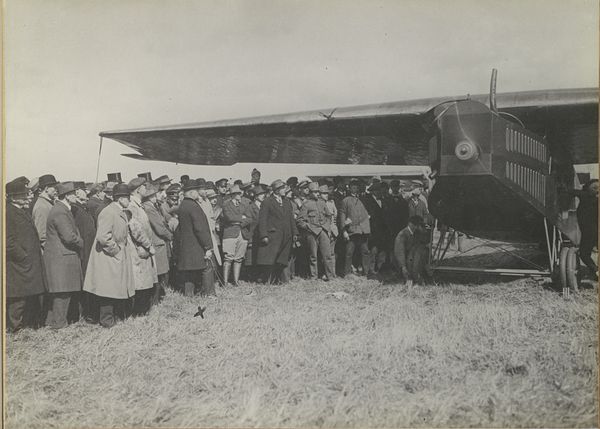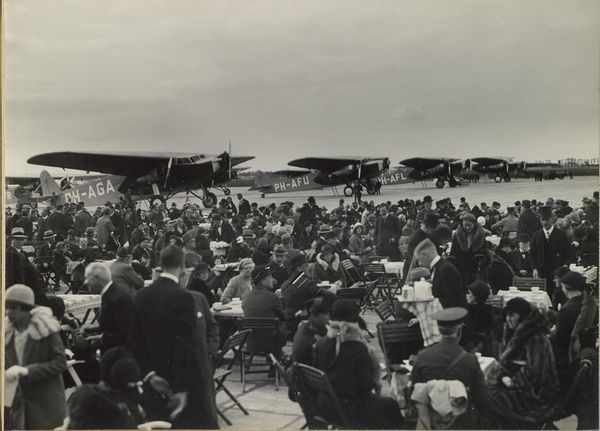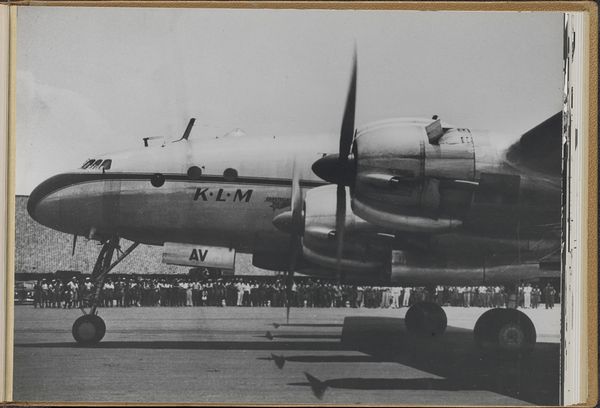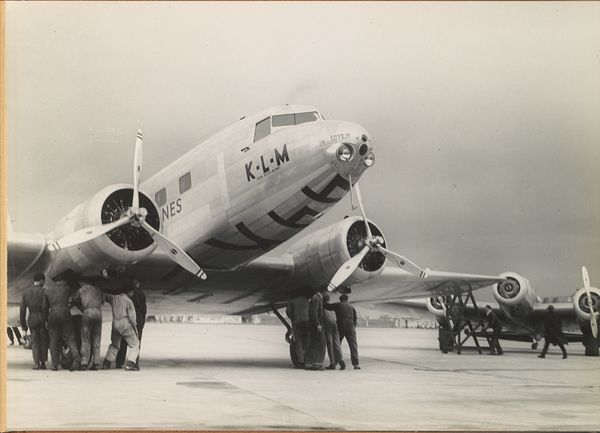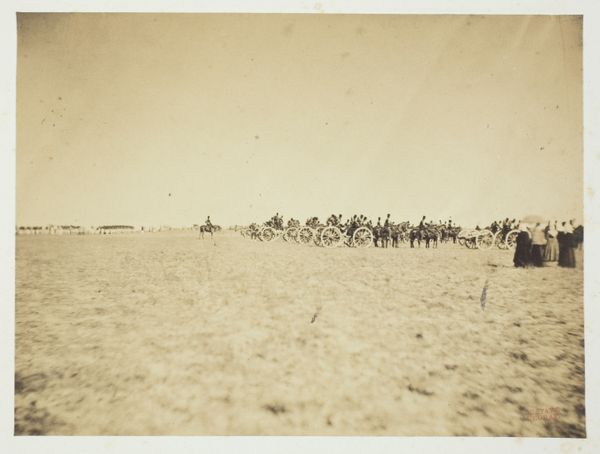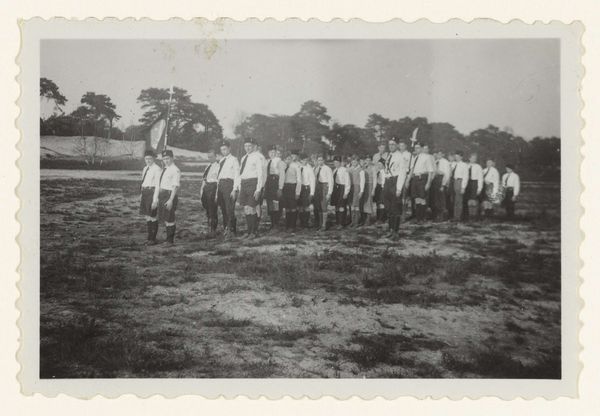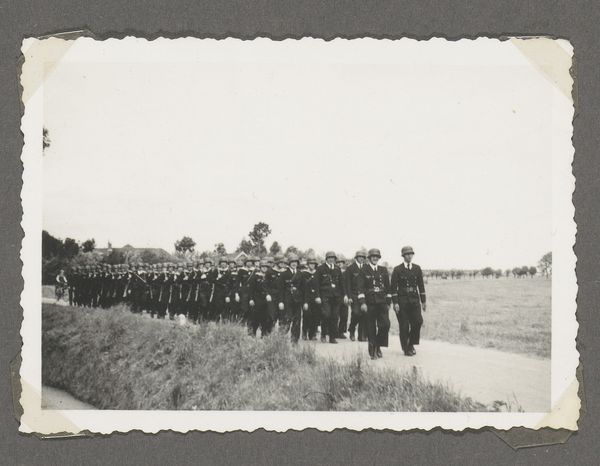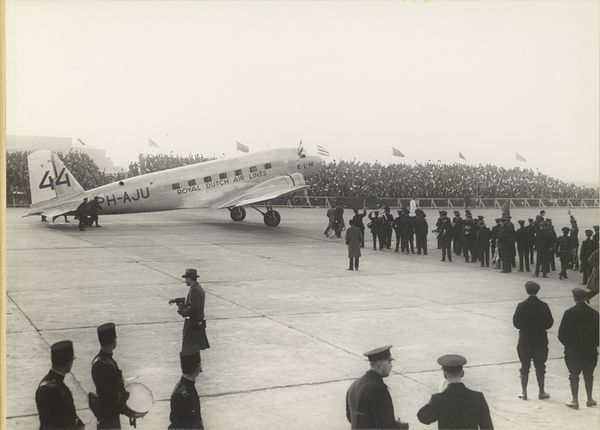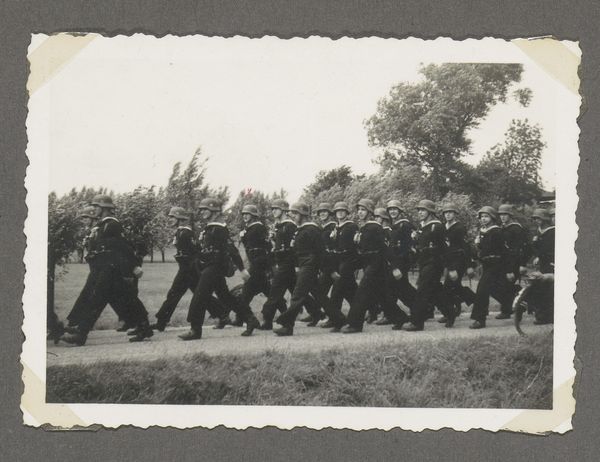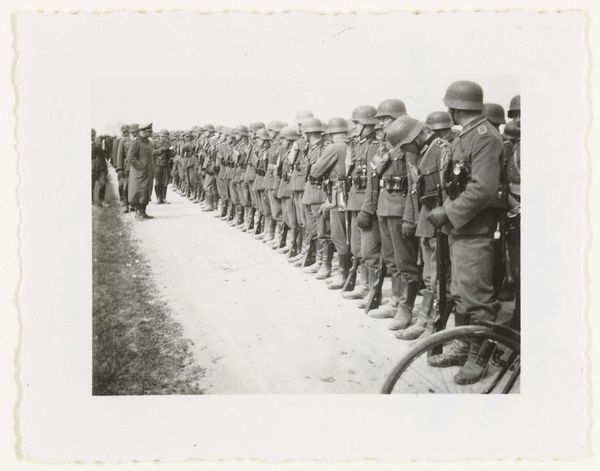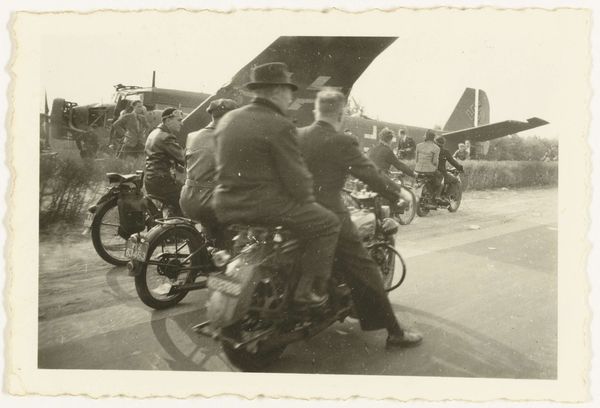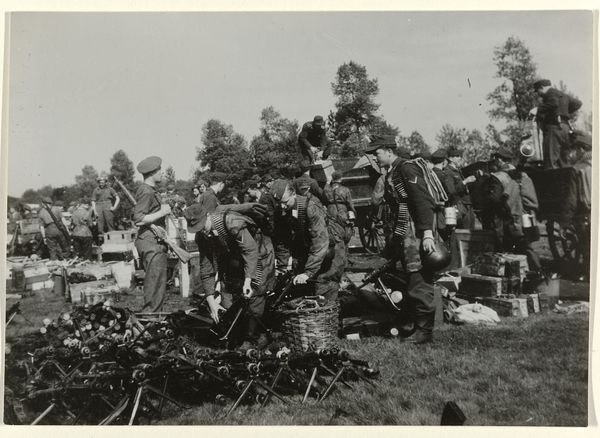
print, photography, gelatin-silver-print
#
print photography
# print
#
landscape
#
archive photography
#
photography
#
historical photography
#
gelatin-silver-print
Dimensions: height 272 mm, width 395 mm
Copyright: Rijks Museum: Open Domain
Curator: What strikes me immediately is the precarious tilt of the aircraft, how the ground seems to give way beneath it. There’s a tangible imbalance to the entire composition. Editor: Indeed. We're looking at a gelatin-silver print, possibly from 1934, titled "Mannen trekken de 'Uiver' uit de modder"—"Men Pulling the 'Uiver' from the Mud." This photographic print captures an anonymous moment related to the 'Uiver,' a famous KLM airplane. The setting is what seems to be a rural field. Curator: The immediate textural contrast is compelling: the sleek metallic body of the 'Uiver' against the yielding earth, and the bodies of the men like dark accents horizontally stacked like bricks, offering a study in geometries. It's all thrust, strain, and drag. Editor: Exactly. And thinking about those bodies: they aren’t a uniform mass; rather, each individual’s labor contributes to a collective effort. The very act of pulling becomes a shared experience of hardship. There is a democratic value to the plane ride and travel, if that mode of mobility brings strangers together and creates a collective goal like in this photograph. We might not have as many group efforts such as this one today. Curator: You highlight the material reality and communal labor. But notice also how the photographer’s eye positions us: we’re both observing this struggle and perhaps implicated in it, part of the crowd almost, sharing their visual perspective—it seems to challenge our idea of individual authorship. Editor: The choice of black and white strengthens that sense of collective memory, don’t you think? Black and white is the past and evokes distance with historical images. What would have happened if the photograph was in color? Curator: Perhaps the monochrome palette directs our gaze towards form, shadow, and line—removing a layer of contemporary interpretation—which lets us concentrate more on what constitutes its raw and intentional symbolism and significance. It allows viewers to read the historical narrative through formal attributes and their visual implications. Editor: Well, through materiality and technique, each in our own way, we’ve revealed various insights contained within this compelling image. Curator: Agreed; it’s in moments like this when the synthesis of perspectives allows one to experience something deeply.
Comments
No comments
Be the first to comment and join the conversation on the ultimate creative platform.
